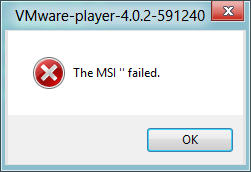http://www.jboss.org/jbossweb/native
By default JBossWeb uses the standard pure-Java implementation and you can observe this in the log:
INFO [AprLifecycleListener] The Apache Tomcat Native library which allows optimal performance in production environments was not found on the java.library.path: [...]
INFO [Http11Protocol] Initializing Coyote HTTP/1.1 on http-0.0.0.0-8080
INFO [Http11Protocol] Initializing Coyote HTTP/1.1 on http-8443
INFO [AjpProtocol] Initializing Coyote AJP/1.3 on ajp-0.0.0.0-8009
INFO [Catalina] Initialization processed in 1118 ms
INFO [StandardService] Starting service jboss.web
INFO [StandardEngine] Starting Servlet Engine: JBossWeb/2.0.1.GA
INFO [Catalina] Server startup in 93 ms
where with native libraries installed it will look like this:
INFO [main] [org.jboss.wsf.stack.jbws.NativeServerConfig:51] JBoss Web Services - Native
INFO [main] [org.jboss.wsf.stack.jbws.NativeServerConfig:52] jbossws-3.0.1-native-2.0.4.GA (build=200803312044)
INFO [main] [org.apache.catalina.core.AprLifecycleListener:181] Loaded Apache Tomcat Native library 1.1.22.
INFO [main] [org.apache.catalina.core.AprLifecycleListener:189] APR capabilities: IPv6 [false], sendfile [true], accept filters [false], random [true].
INFO [main] [org.apache.coyote.http11.Http11AprProtocol:113] Initializing Coyote HTTP/1.1 on http-0.0.0.0-8080
INFO [main] [org.apache.coyote.ajp.AjpAprProtocol:166] Initializing Coyote AJP/1.3 on ajp-0.0.0.0-8009
INFO [main] [org.apache.catalina.startup.Catalina:536] Initialization processed in 992 ms
INFO [main] [org.apache.catalina.core.StandardService:507] Starting service jboss.web
INFO [main] [org.apache.catalina.core.StandardEngine:431] Starting Servlet Engine: JBossWeb/2.0.1.GA
INFO [main] [org.apache.catalina.startup.Catalina:584] Server startup in 39 ms
To enable APR, download the appropriate package for the environment from http://www.jboss.org/jbossweb/native and extract into jboss\bin – in my case a Windows server, and that would be tcnative-1.dll and openssl.exe. They need to be in the application path, if it doesn’t find them JBoss will revert to standard Java implementation.
One problem now is that APR uses openssl.exe and the HTTPs configuration has to be changed, but I didn’t look too much into that, since my environment doesn’t require it I just commented it out; otherwise it will throw an exception at start-up complaining about the setup of the secure connector.
jboss\server\default\deploy\jboss-web.deployer\server.xml
~~~~~~~~~~~~~~~~~~~~~~~~~~~~~~~~~~~~~~~~~~~~~~~~~~~~~~~~~
<!-- Define a SSL HTTP/1.1 Connector on port 8443
This connector uses the JSSE configuration, when using APR, the
connector should be using the OpenSSL style configuration
described in the APR documentation
<Connector port="8443" protocol="HTTP/1.1" SSLEnabled="true"
maxThreads="150" scheme="https" secure="true"
clientAuth="false"
keystoreFile="${jboss.server.home.dir}/conf/ssl-keystore.jks"
keystorePass="hgf8tx" sslProtocol="TLS" />
-->
Restart JBoss and check the performance.





















